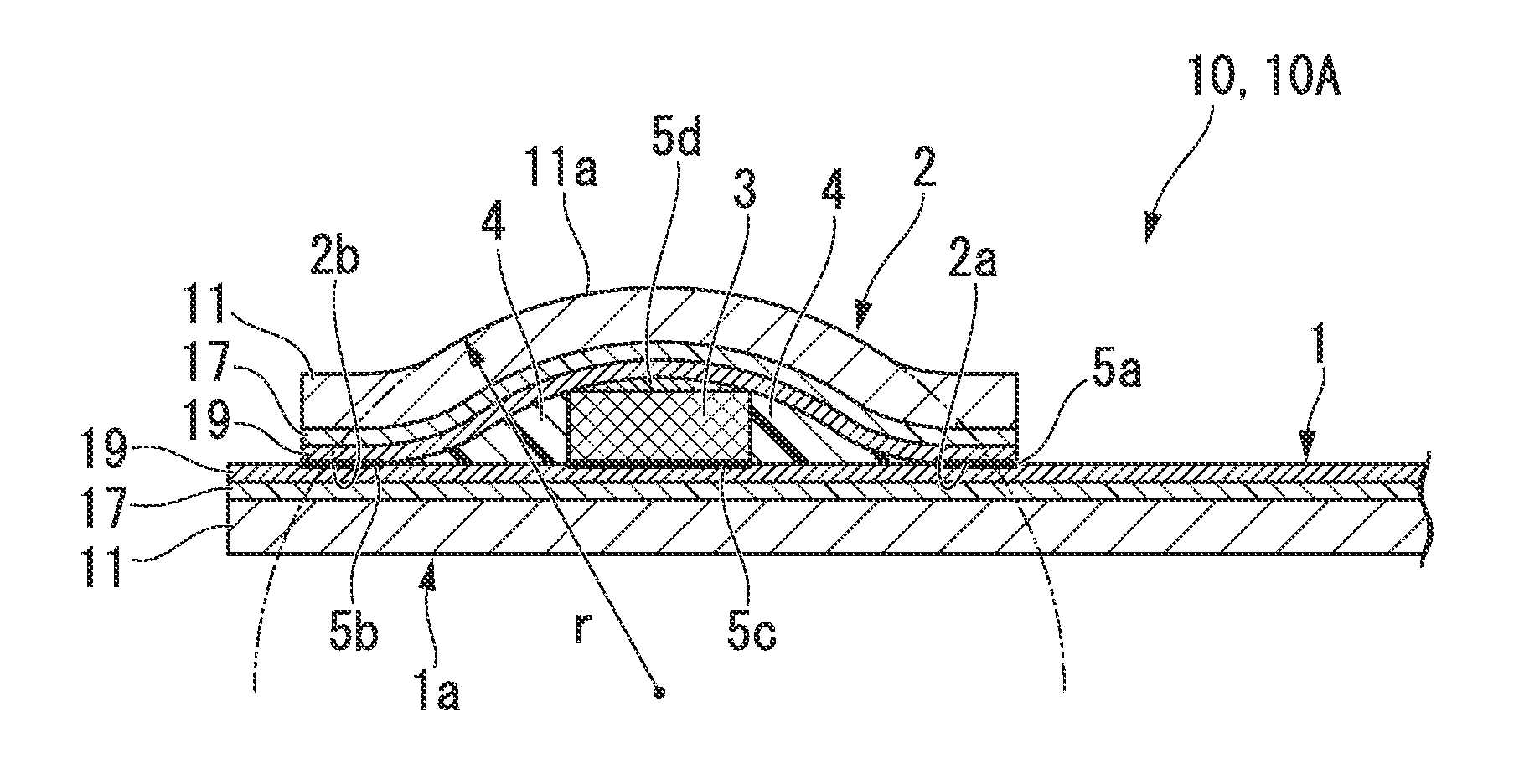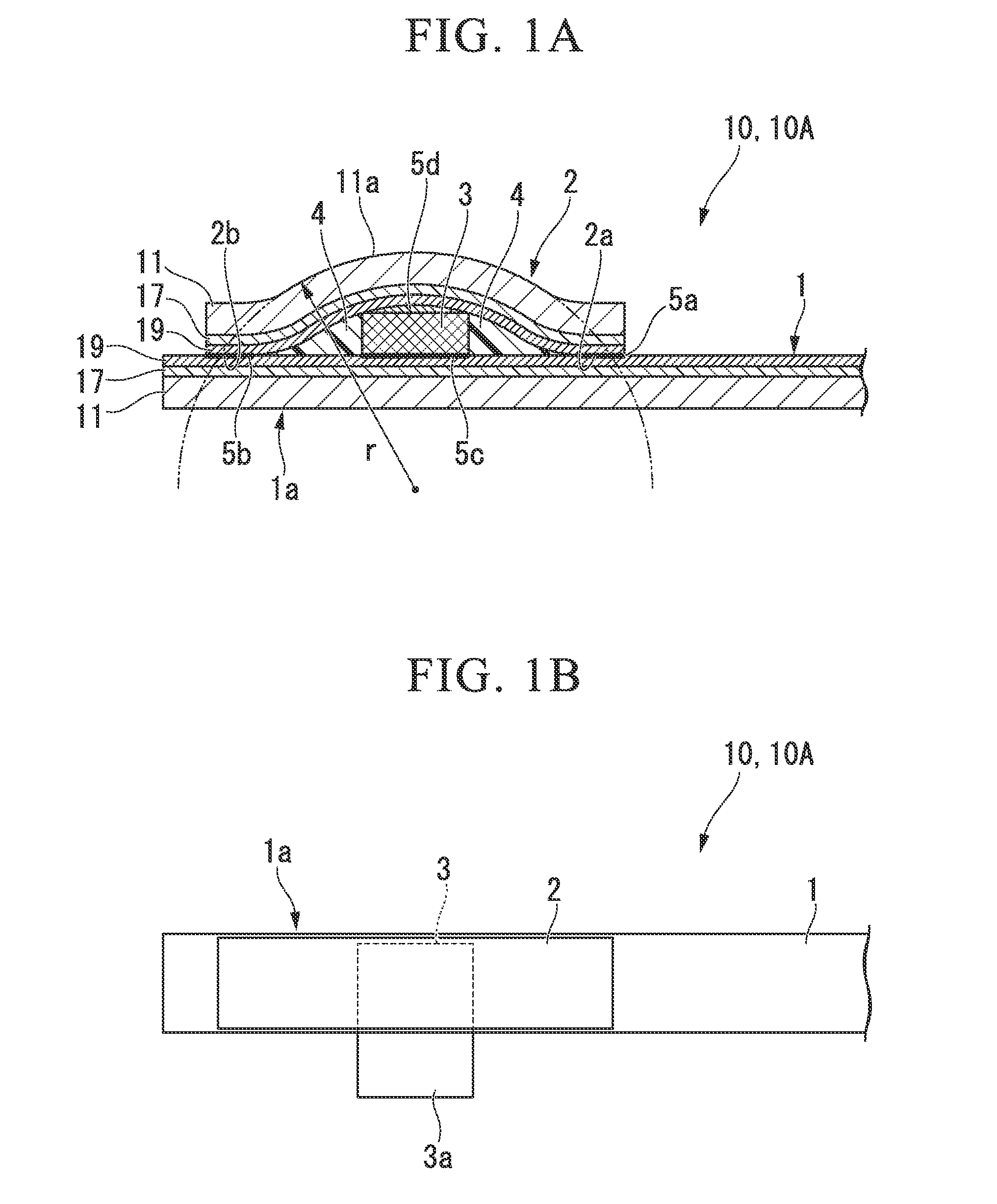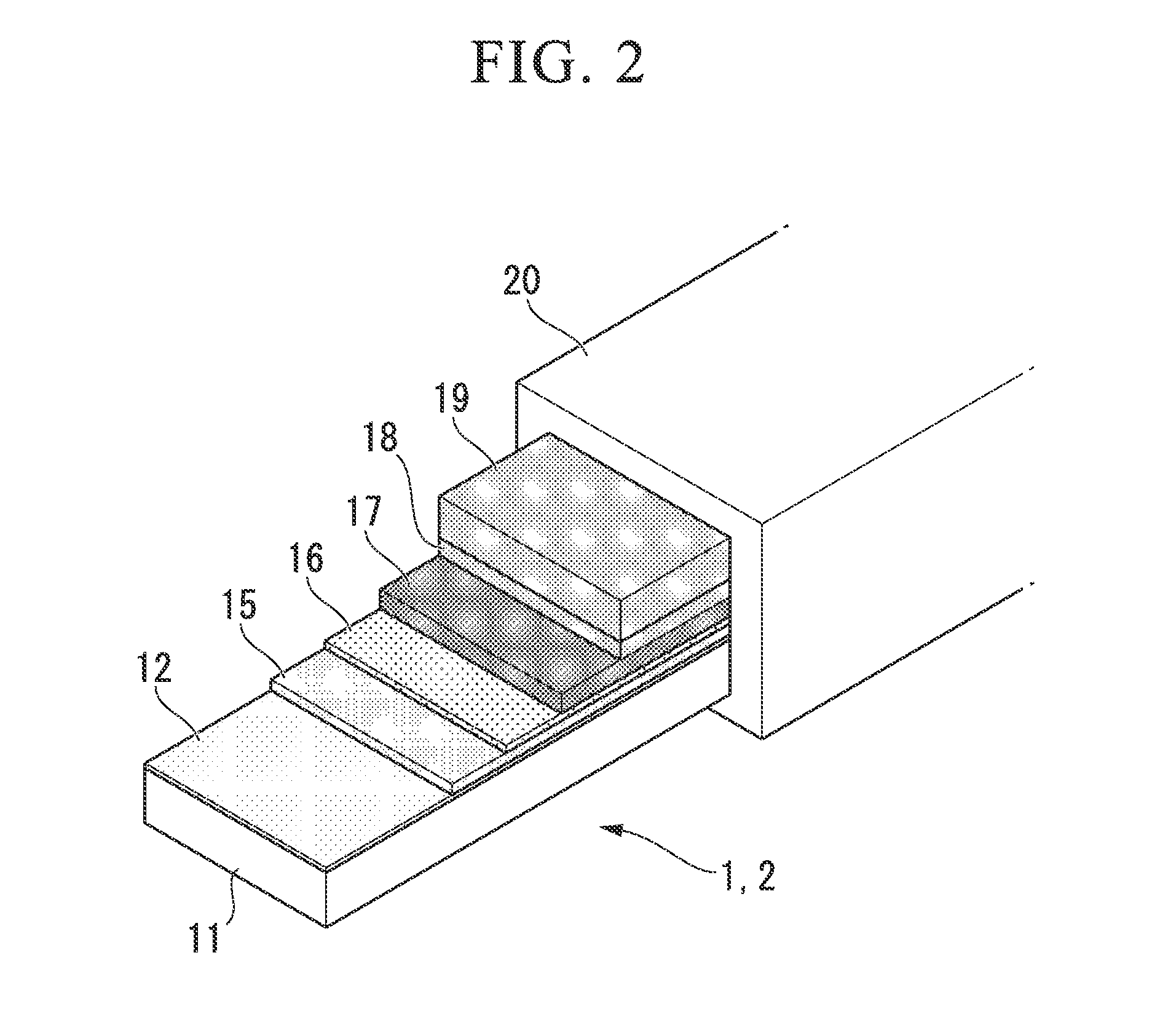Electrode unit joining structure for superconducting wire, superconducting wire, and superconducting coil
a superconducting wire and electrode unit technology, applied in the direction of superconducting magnets/coils, magnetic bodies, connection contact material materials, etc., can solve the problems of high cooling cost, inability to use conductors, and inability to maintain a superconducting state of metal-based superconductors, so as to prevent the burning out of the superconducting wire, reduce the joule heat that occurs due to the contact resistance between the electrode and the superconducting
- Summary
- Abstract
- Description
- Claims
- Application Information
AI Technical Summary
Benefits of technology
Problems solved by technology
Method used
Image
Examples
example 1
[0084]Gd2Zr2O7 (GZO; an intermediate layer) having the thickness of 1.2 μm was formed on a base member that was formed from a tape-shaped Hastelloy (trade name, manufactured by Haynes International Inc. in the United States of America) having the width of 5 mm and the thickness of 0.1 mm by an ion beam assisted deposition method (IBAD), and then CeO2 (a cap layer) having the thickness of 1.0 μm was formed by a laser deposition method (PLD method). Subsequently, GdBa2Cu3O7 (a superconducting layer) having the thickness of 1.0 μm was formed on the CeO2 layer by the PLD method. Furthermore, a laminated structure body including a silver layer (a stabilizing base layer) of 5 to 10 μm and a copper layer (a stabilizing layer) having the thickness of 0.1 mm was joined on the superconducting layer to prepare a superconducting wire. An electrode, which had dimensions of width of 20 mm×length of 50 mm×thickness of 5 mm and which was formed from an oxygen-free copper, was disposed on the stabil...
example 2
[0088]A plurality of superconducting wires having the electrode unit joining structure having a structure shown in FIGS. 1A and 1B were prepared similarly to Example 1 except that a radius of curvature r of a base member of the superconducting wire cover rod was changed to 6 to 19 mm.
[0089]With respect to the plurality of the superconducting wires that were obtained, a critical current (IC) at a nitrogen temperature (77 K) was measured, and a degree of variation (IC / IC0) with respect to a critical current (IC0) of the superconducting wire before the joining of the superconducting cover tape was calculated. FIG. 4 shows a relationship between (IC / IC0) and the radius of curvature r (mm) of the surface of the base member of the superconducting wire cover rod.
[0090]As shown in FIG. 4, when the radius of curvature r of the surface of the base member of the superconducting wire cover rod was 11 mm or less, the critical current was lowered. On the contrary to this, when the radius of curva...
PUM
 Login to View More
Login to View More Abstract
Description
Claims
Application Information
 Login to View More
Login to View More - R&D
- Intellectual Property
- Life Sciences
- Materials
- Tech Scout
- Unparalleled Data Quality
- Higher Quality Content
- 60% Fewer Hallucinations
Browse by: Latest US Patents, China's latest patents, Technical Efficacy Thesaurus, Application Domain, Technology Topic, Popular Technical Reports.
© 2025 PatSnap. All rights reserved.Legal|Privacy policy|Modern Slavery Act Transparency Statement|Sitemap|About US| Contact US: help@patsnap.com



